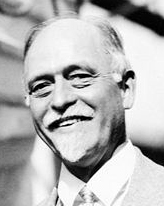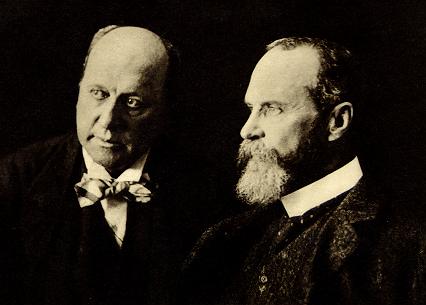"The Fed has joined the Bank of Japan at the (near) zero lower bound on the overnight risk-free nominal interest rate; the Federal Funds target rate is set between zero and 25 basis points. The rather strange vagueness of the new target - a 25 basis points range rather than a point target - is unnecessary. It is the product of the inexplicable inability of central banks everywhere (US, UK, Euro Area) to fix the overnight rate at any level (including zero) by accepting deposits (reserves) at that rate in any amount at any time and to lend (against appropriate collateral) at that rate in any amount at any time.
Being willing to buy or sell any amount at a price is the definition of setting a price. Central bankers want to both set the price (overnight interest rate) and keep some control over the quantity (reserves held by banks with the central banks and/or the stock of secured overnight lending). Except for a fluke, they will be frustrated. The overnight rate will, quite unnecessarily, depart from the official policy rate (the Federal Reserve’s Federal Funds target rate, the Bank of England’s Bank Rate, the ECB’s Main refinancing operations Fixed rate). It’s an unnecessary slight operational blemish - a minor badge of operational incompetence.
But this minor deficiency in the genetic code of central bankers and central bank officials charged with setting the overnight rate should not obscure the fact that the Fed’s decision to head straight for the zero lower bound on short nominal interest rates was the right thing ( HEAR HEAR ). At worst it will not help much to bring down the cost of private borrowing and increase its availability. But it won’t hurt.
The Fed and the Bank of Japan will soon have company on the floor. The Bank of England should get Bank Rate to zero late spring or early summer and even the ECB, the ultimate gradualist procrastinator, will get there before the middle of 2009.
Then what? Quantitative easing and qualitative easing are next. Quantitative easing is the expansion of the balance sheet of the central bank keeping constant the liquidity and (credit) risk composition of its assets, by increasing the stock of base money. It does not matter whether the increase in the stock of base money takes the form of an increase in the stock of currency (bank notes) or an increase in the stock of reserves held by the banks with the central bank. Currency does not bear interest, while reserves may bear interest, positive or negative. For ’seigniorage’ the interest paid on base money matters; it is a key determinant of the profits of the central bank, the solvency of the central bank and the payments made by the central bank to the Treasury.
But as long as the solvency of the central bank, its capacity to pursue its its mandate and the solvency of the sovereign are not dependent on a particular level of seigniorage earned by the central bank, the fact that reserves are interest-bearing and currency is not does not matter for the central bank’s ability to use quantitative easing and qualitative easing to bring rates and spreads down. All that matters is that both currency and reserves represent ultimate, unquestioned liquidity. And they do.
Qualitative easing is a change in the composition of the assets on the central bank’s balance sheet towards less liquid and higher risk assets. The Fed has made it clear that it does not have great ambitions for bringing down the long-term risk-free nominal interest rates on US Treasury bonds. These long-term yields are already rather low. Instead its main ambition is to reduce the spreads between official rates and private lending and borrowing rates. It will do so by increasing the amount of private securities held on its balance sheet.
Some of this increase in the share of private sector assets in the Fed’s balance sheet will represent the Fed’s acceptance of a wider range of private securities as collateral in repos, at the discount window and in its steadily growing number of special facilities. Increasing amounts will be the result of outright purchases of private securities by the Fed, something I recommended in August 2007. The Fed has already purchased large quantities of commercial paper and asset-backed commercial paper. It is also increasing its purchases of residential mortgage-backed securities issued by or guaranteed by Fannie and Freddie. It is planning purchases of a wider range of asset-backed securities. It may end up emulating the Hong Kong Monetary Authority by investing in the stock market, say by purchasing a suitable index of listed stocks, like the Wilshire 5000 Total Stock Market Index. I made such a proposal when deflation and the zero lower bound last threatened, in 2003.
One thing the central bank needs in order to engage wholeheartedly in quantitative easing and especially in qualitative easing, is the full backing of the Treasury/ministry of finance. Greater central bank exposure to private sector default risk is an inevitable result of quantitative and qualitative easing, unless the entire expansion of the balance sheet of the central bank is achieved by purchasing sovereign debt instruments. If the default risk materialises, the Treasury has to recapitalise the central bank immediately. Such automatic indemnification is necessary if the central bank is to be able to pursue its regular macroeconomic objectives. If it is not automatic and unconditional, it threatens the operational independence of the central bank in its rate setting decisions.
The need for fiscal backing of the central bank for the central bank to be able, without endangering its price stability objective, to engage in quantitative and qualitative easing by raising its exposure to private securities subject to default risk means that the Euro Area suffers from a handicap. At least 15 national Treasuries (of the 15 Euro Area member states) and possibly as many as 27 national Treasuries (of the 27 EU member states - all 27 EU member states’ national central banks are shareholders of the ECB) may have to be involved in a recapitalisation of the ECB/Eurosystem if it were to suffer a material capital loss as a result of its monetary and liquidity operations.
That would be a huge organisational, logistic, technical and political problem. It can only be solved effectively by creating the beginning of a supranational EU fiscal authority, with independent tax and borrowing powers ( WOW ). The alternative, interim solution, would be to create an EU fund (containing, say, €2.5 trillion or €3 trillion) which could be used to recapitalise the ECB/Eurosystem at short notice.
What else can be done by the central banks?
The spreads between interbank rates (Libor, Euribor) and either Treasury securities of the same maturity or the market’s expectation of the official policy rate over the same horizon (as reflected in the overnight indexed swap (OIS) rate) have been coming in but still appear excessive. In addition, very little interbank lending appears to take place at these interbank rates.
I propose that the Fed, the ECB and the Bank of England set themselves up not just as providers of a clearing platform for interbank lending, but as a market maker or universal counterparty in the unsecured interbank market. The central bank would set, say, 3 month Libor as follows. The central bank would offer to accept deposits from eligible banks at the 3-month OIS rate minus, say, 50 basis points or 75 basis points, and it would be willing to lend unsecured to eligible banks at the 3-month OIS rate plus, say, 50 basis points or 75 basis points. The rates offered for loans could be made to depend on the central bank’s assessment of the borrowing bank’s creditworthiness, with 50 or 75 basis points being the benchmark for a bank with a AA or A rating. The amounts lent at these spreads over Libor would not be open-ended. These facilities would be offered for unsecured loans to and deposits from banks at any maturity between overnight and, say, 2 years. The OIS markets now stretch to a 30-year horizon and are sufficiently liquid to provide useful benchmarks for pricing the corresponding unsecured interbank markets."
All good points, but I agree with Nick Rowe:
"Quantitative and qualitative easing would be more effective if the Fed liabilities were NOT backed by the fiscal capacity of the Treasury. That way an increase in the money supply would be more likely to be seen as permanent, and thus more likely to increase expected inflation.
Helicopter money is theoretically equivalent to buying assets which turn out to be bad (because you are then just giving away money).
In other words, the helicopter would be more effective if the Fed publicly threw away its vacuum cleaner (or at least locked it up for 10 years). Indeed, in a liquidity trap, the helicopter won’t work at all if people expect the vacuum cleaner to be brought into play as soon as there is an excess supply of money.
There is a trade-off between the effectiveness of fighting deflation now and being able to control subsequent inflation if the Fed overdoes it.
Posted by: Nick Rowe | December 17th, 2008 at 3:32 pm | Report this comment"Here's my, deflation effected, - 2 cents:
I think that Nick is right. I believe that everyone should read this paper:
http://www.nber.org/~wbuiter/helijpe.pdf
I actually thought that you agreed with Nick.
Posted by: Don the libertarian Democrat | December 17th, 2008 at 5:57 pm |






































2 comments:
Thanks Don! Nice touch, reminding Willem of his previous paper. And it is directly relevant to that point.
Totally off (this) topic: what about "yellow dog" contracts? (I think that's the correct term: where a newly hired worker (as a condition of being hired) agrees he will never join a union). Illegal? Would a libertarian violate the right of free contract in this case?
Nick,
The question about unions has three levels for me, so it's complicated.
Level 1 Economic/Political Theory Neither side has any advantages in law
Level 2 Political Economy/ Politics
In the real world, objections against union advantages portray a passive and decent employer. In the real world, businesses use government to their own advantage if they can. They are interventionists. The business owners would use government if they could, even in a situation described as Level 1.
Level 3 Dem/GOP This explains a lot of the problems in the mess of labor laws we now have.
As to Yellow Dog Contracts, I've been mulling that over, and I still haven't come to a decision. On the one hand, I wouldn't mind a contract that specified a worker's pay over a number of years,and his agreeing to be terminated at any time, thereby alleviating the main
concerns of the owner. On the other hand, I'm bothered about telling someone that they can't join a group. That's my dilemma. I wouldn't even mind a clause that says that the worker can join a union for its benefits, but he is still personally subject to his contract. Of course, he could quit, join the union, and then be rehired under the new union contract.
My main disagreement is with people who actually believe that business owners in this country are not full believers in government intervention and favors when it suits their purposes. If workers could simply join unions and that was it, the employers would still try and find ways to make even that basic right harder for workers to use. That's just my belief.
Take care,
Don
PS My objection to Mallaby's comments were that trashing unions right now was not a wise move. I did understand what the GOP was up to, on the other hand.I didn't originally see him and others making your point, which I might well agree with, about specific changes in the law.
Post a Comment